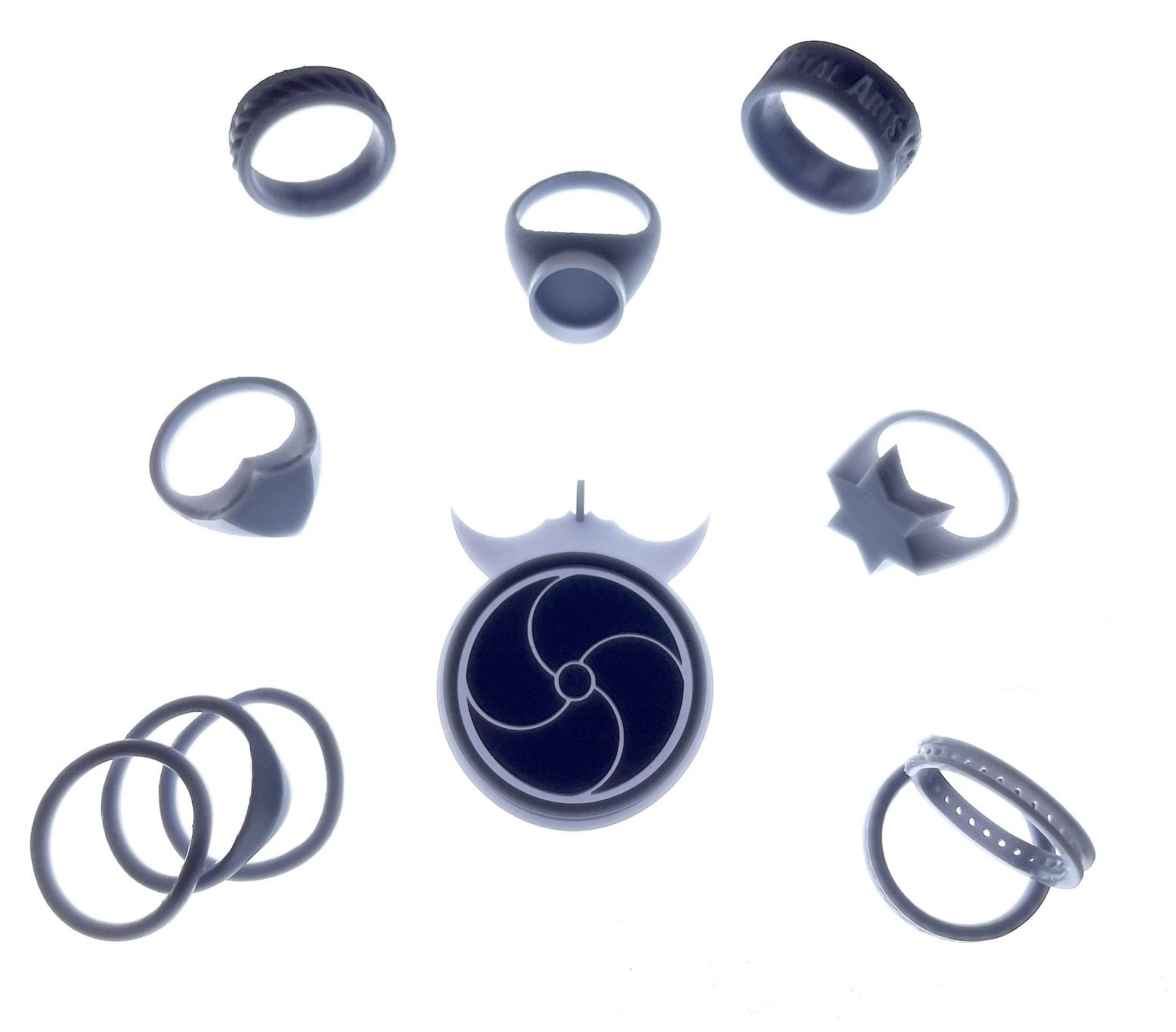Interview with Norsola Johnson about CAD, 3D printing and teaching for the M.A.M.A.
Norsola Johnson is a metal smith, designer, composer, musician, traveler, stargazer, 3D modeler, new media artist, motorcycle enthusiast, student of religion and esotericism, and ex-ballerina, among a few other things. Active in the world of metal arts for twenty years, she has studied Computation Arts at Concordia University and earned a DEP in Jewellery at Ecole des Metiers du Sud-Ouest-de-Montréal. Combining her passion for these myriad fields, her practice explores the endless possibilities for traditional jewellery creation in the digital age. Teaching is rapidly becoming one of the most rewarding aspects of her life and she is honoured to be joining the team at the Montreal Academy of Metal Arts.
We can see from your bio. that you have followed many diverse paths in your life. At what point and why did you decide to get involved with metal smithing?
My first jewellery class was at the Saidye Bronfman Centre over 20 years ago. I don't remember my exact motivations for signing up, aside from a deep love of gemstones and a desire to wear all the rocks, but from the first solder flow, I was hooked... I felt like a proper alchemist, changing the properties of metal, and I still get giddy when playing with fire…
From there what led you to Computer Aided Design?
I have enjoyed playing with computers since I was quite young and I also enjoy making art, so Computation Arts at Concordia University was a logical choice. There, I learned 3D modelling (among other subjects) and eventually started using CAD as part of my jewellery practice.
How do you personally use Cad in your work? How much of your work do you create using Cad and 3d printing?
CAD represents a relatively small part of my practice, perhaps 20 per cent? It's hard to gauge. I sometimes use it to visualize, prototype, and test designs, or to create complex parts that require extreme precision, or for very small elements that my eyes aren't sharp enough to see clearly. I also find it very useful for creating renders to show clients when working on custom or collaborative designs. Lately I've been exploring the use of uncast resin prints in some of my pieces. The possibilities are near endless, and though 3D is not the main focus of my work, I find it to be a very important tool in my studio, and one that I would have a hard time working without.
Can you tell us more about the Rhino 3D class offered at MAMA?
The class is structured around lectures and exercises that gradually build on each other, culminating in a final project that is printed in class. I created a workbook for the class so that students can follow along during lectures and practice the exercises at home. I have found that information learned from just in-class practical exercises is quickly forgotten, and having a reference to work from and practice outside of the classroom helps a great deal toward becoming familiar and comfortable with the software. Consistent practice is the best way to learn software, and the workbook helps with that.
Do you think in order to realistically compete in the current jewellery world, that it is helpful to have some understanding of CAD and 3D printing? What advantages does it give a jeweller?
CAD is an important skill to have in today's jewellery industry. I used to say that it was the future of jewellery making, but at this stage it's pretty much the present. Many jewellery companies, particularly those that produce large quantities of similar designs, now use 3D almost exclusively. Jewellers can also save time and money by using 3D printers for rapid prototyping, working out any design issues before committing to expensive metals. There are also fascinating possibilities to explore using parametric design tools. 3D will likely not replace all traditional fabrication methods but it is a useful tool to add to one's skill set, and can sometimes make an impossible design feasible.
The Benefits of Studying Rhino 3D with Norsola
Studying Rhino 3D with Norsola offers many benefits for artists and professionals in the field of metal arts. Rhino 3D is a powerful computer-aided design (CAD) software that is widely utilized for creating intricate and detailed 3D models. When paired with the expertise of Norsola, the learning experience becomes not only educational but also inspiring and practical.
Excellence in 3D Modeling
Norsola's knowledge and proficiency in Rhino 3D empowers students to unlock the software's full potential. With her careful guidance, students can grasp the intricacies of 3D modeling, enabling them to eventually create complex and innovative designs with precision and finesse.
Real-World Applications
The comprehensive curriculum, designed by Norsola, emphasizes practical applications within the context of metal arts and design. This approach allows students to translate their digital creations into tangible metal artworks, providing them with a clear understanding of the design-to-production process.
Mastering Advanced Techniques
Norsola's mentorship enables students to delve into the techniques and functionalities of Rhino 3D, equipping them with the skills to tackle their projects with confidence. From organic shapes to more intricate patterns, students gain the expertise to eventually execute diverse and challenging designs.
Fostering Creativity and Innovation
Through Norsola's guidance, students are encouraged to explore their creativity and push the boundaries of traditional metal art. By mastering Rhino 3D, students can bring their imaginative concepts to life, fostering innovation within the metal arts community.
In conclusion, studying Rhino 3D with Norsola at The Montreal Academy of Metal Arts not only provides a solid foundation in digital design but also cultivates an environment of creativity, technical mastery, and practical application in the realm of metal arts. Whether aspiring to be craftsmen, designers, or artists, this program offers invaluable skills and insights that can propel students towards success in their artistic endeavors.








